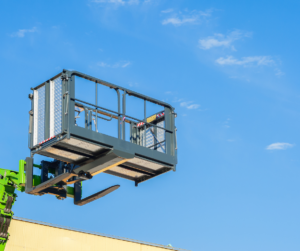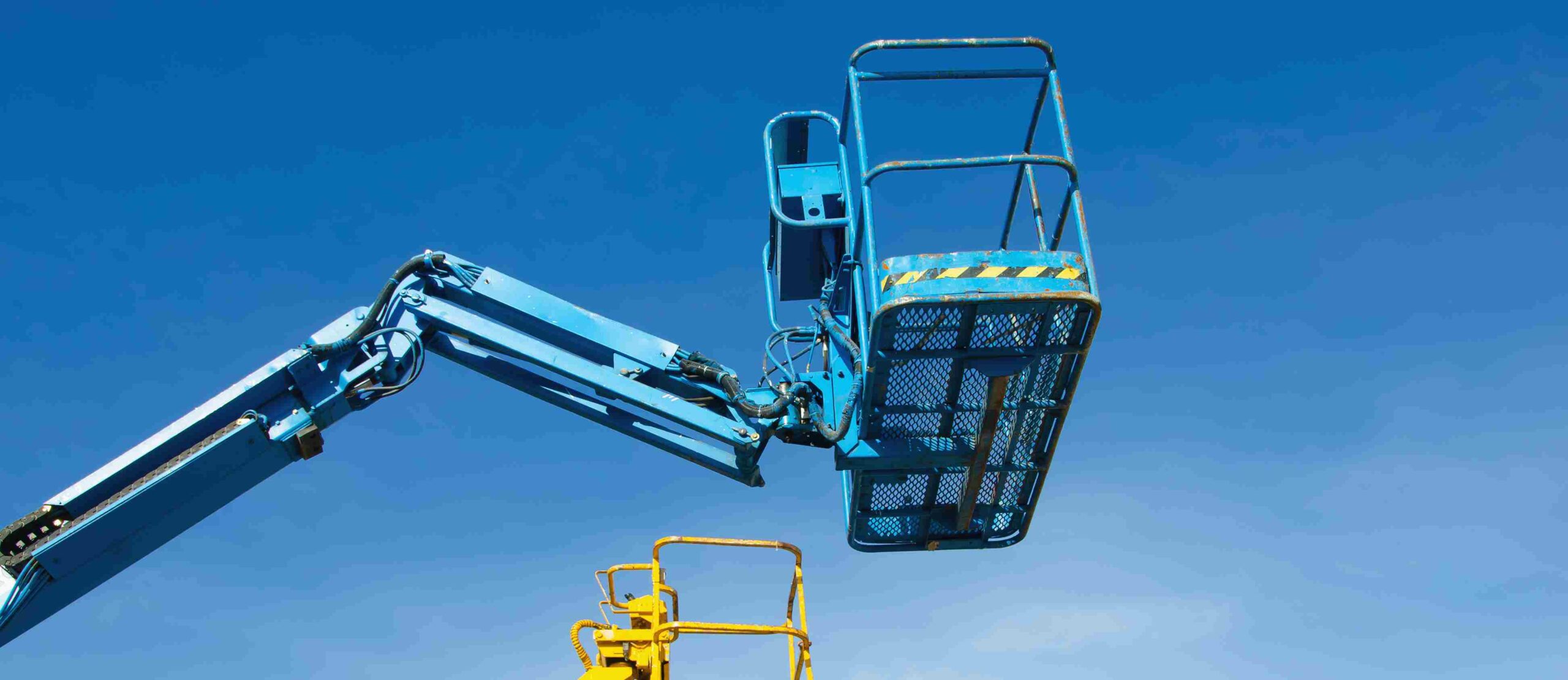Staying safe when using elevating work platforms
Choosing the correct type of access system and knowing the safe work methods required are vital for the well-being of those who work at heights. Here’s everything you need to know about EWPs.
Elevated work platforms (EWPs) and scissor lifts are great tools for trades to gain access to heights safely and effectively. But working at heights can be deadly, and safety must always be at the front of your mind whether you are up a ladder or using a lift. Master Electricians Australia explains all.
Who can use an Elevating Work Platform (EWP) or scissor lift?
Some classifications of height access machines require a high-risk work licence to operate. Some site rules require operators to have competency assessments. Others require special training to be in certain high-risk areas, such as around live lines.
Operators of EWPs with a boom over 11 metres must have a high-risk work licence to operate. These are issued by the government regulator after proof that training has taken place by an RTO and competency has been assessed. Scissor lift and EWPs under 11 metres don’t require a high-risk work licence. However, operators should be assessed as competent before operating.
Assessment can be either by the person in charge of the machine deeming the operator capable or by an RTO training the operator and assessing their skills. An industry competency card, known as a yellow card, is typically issued after this.
The yellow card is not a regulatory requirement, but it is proof the person who holds it has been trained and assessed in the machinery listed on the card by the card issuer.
Moving EWPs
EWPs and scissor lifts driven on public roads may need traffic control, possibly limited road use registration and a suitable road vehicle licence (usually issued as an ‘undefined vehicle’ category, and which is attached to the operator’s vehicle licence). Truck-mounted EWPs that are road registered will need a suitable category of vehicle licence for the base vehicle.
When you need a harness
EWPs with booms require PPE and harnesses to be worn when operating them, even with the boom lowered. If a problem occurs and the operator is not properly restrained, they could be flung from the basket. Full harnesses are required, with hitch points in the basket and fall arrest devices.
Most scissor lifts have railings around the basket, which are at a height that allows operators to not need a harness.
But make sure you check the operating manual for the machine to confirm recommended precautions and PPE required.
Some sites may require a harness to be worn by all operators, along with safety helmets and other appropriate PPE.
Read the specifications and check the logs
When operating an EWP, great care should be taken to follow manufacturers’ specifications for suitable operation of the machine. Logbooks should be examined before use to ensure there are no problems with the machine, and the recommended checks should be done (for example, oil, water, batteries, tyres, booms, controls, eStops, levelling devices).
 Ensuring someone is a competent person to operate a machine will also include their ability to adequately assess the fitness of that machine prior to use.
Ensuring someone is a competent person to operate a machine will also include their ability to adequately assess the fitness of that machine prior to use.
Know where you are working
Location also plays an important role in the selection of suitable equipment to use. An indoor or flat surface-type machine may be unsuitable for rough, soft or uneven terrain use. Internal combustion engine-powered machines will produce exhaust gases that are dangerous for use inside a building without extra precautions being taken. Machines without levelling devices are generally unsuited to set up on slopes. Machinery should be selected to ensure compliance with safe access around overhead electrical services lines.
Specialist insulated booms, and the prerequisite electricity network access training is required to work on or near electricity networks.
This includes tasks such as tree lopping, building work, and electricity network access work.
These machines are specially built, tested regularly, and rated for various levels of network voltage levels particular to their set purpose. Even hoses and fittings for hydraulic lines on these machines are made from special non-conductive materials in the insulated zones.
Safety observers may be required in certain situations in closer proximity to exclusion zones around power network overhead lines, and this should be identified before work commences. Safety observers may also be needed where hazards are present, such as working near, a road, structures, excavations and edges or around other trades.
Watch your weight when using an EWP
Weight plays an important factor. Look at the capacity of the machine, and remember humans are heavy creatures, and we tend to have equipment and tools that also have a decent amount of weight. And that’s before we put all the components or fittings into the basket.
If you are close to the specified weight limit and you are removing equipment such as a heavy old streetlight, remember when that weight lands in the basket it may push the machine past its safe limits, which can result in the machine cutting out on overload. (Your author may be speaking from personal experience here.)
Under no circumstances should untrained or unqualified operators be working a machine.
Fatalities have resulted from inexperienced people operating elevated work platforms. The machines can very quickly be put into an unsafe position or be driven into surrounding buildings, machinery, plant or electricity lines.
Do I need to buy an EWP?
 EWPs can be privately purchased, and these machines are a significant investment. They also require regular machinery inspections and component replacements to remain in a safe and registered state.
EWPs can be privately purchased, and these machines are a significant investment. They also require regular machinery inspections and component replacements to remain in a safe and registered state.
Unregistered or uninspected vehicles should not be operated, and the person in charge of the work has a responsibility to ensure all workers have safe work environments, which include the machinery and vehicles they operate.
Due to these costs, unless a machine is in frequent use, it is likely to be cheaper to hire EWPs for the job at hand. Some hire companies will give substantial discounts for long-term or frequent hire.
Induct new machines
When a machine is brought to site, many principal contractors will require that machine to be ‘inducted’, where its serial number and identification is recorded and the machine inspected by the site safety person or a nominated competent site person before it is allowed to be used.
Ensure if you do bring machinery to a site that the machine is parked in a designated area or safe spot, and that the keys are removed at the end of use period.
Machinery should not be used without the express permission of the person in charge of that machine.
What happens in a failure?
If an EWP is made unsafe to operate by mechanical failure or accident, it should be removed from service and tagged out.
Logbooks need to be updated with the details of the failure, and the person in charge of the machine must be notified that repair or replacement is required.
The EWP should not be operated again until the logbook is filled out to explain repairs undertaken by a qualified person, and, if needed, re-inducted to site.
Working with EWPs can be dangerous, as is all work at heights. MEA Safety has a range of SWMS available for different ways of working at heights. If you have questions about EWPs or heights, Master Electricians have unlimited calls to the MEA Safety Hotline. Phone 1300 889 198 to speak to the experts.





Comments (0)
Write a Comment